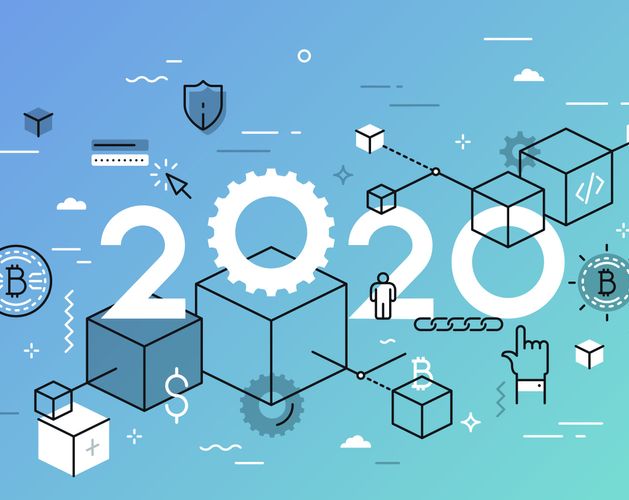With the start of a new year, we try to look forward to what we think the IT world will hold over the coming twelve months. In conjunction with my colleagues in Softcat’s Office of the CTO, we’ve put our heads together, and made the following predictions, aligned to our four core IT priorities; Cyber Security, Cloud, Modern Workplace, and IT Intelligence.
Consolidation
One theme that is by no means unique to 2020 is vendor and platform consolidation. Nonetheless, there are a number of markets that are still ripe for consolidation. As we have seen over the years, new vendors and products eventually reach a market saturation point where mergers, acquisitions and restructuring take place. There are numerous segments where this may happen, but two that we see as particularly likely are Cyber Security and Data.
In Cyber Security, I have already seen the beginning of this, with startups including Cylance, Carbon Black, and Twistlock all being acquired by more traditional names, and this trend looks set to continue.
In the Data market, the big bellwether has been the Cloudera-Hortonworks merger, indicative of broader struggles across the market as the technology landscape changes. In addition to this, the rapid portfolio expansion of traditional IT players, especially those in the SaaS and hyperscale cloud space is eroding the competitive advantages of smaller vendors, making it harder for them to compete.
Partially intertwined with this move to consolidation and simplification is our second big trend for 2020:
Employee Choice
The world is changing rapidly, and as technology becomes more and more all-encompassing, the move from centralised to distributed control has become imperative. The need to increase agility, embrace new technologies and to attract, retain and utilise the best talent all require the removal of barriers. This can take several forms, such as merging policy and identity, as in Azure AD Conditional Access, or using consolidated cloud billing models that enable operators to choose the right platforms at the right time.
Even across entire sectors such as Healthcare and Education, 2020 looks set to see technology used as a catalyst to devolve choice and data ownership closer to the individual, reflecting the importance of choice, but also the criticality of context and personal knowledge in making the right choice.
The degree of freedom that organisations are prepared to offer will differ, but this is a trend that we’re seeing across the board, with the need to offer and support choice at the point of consumption being increasingly important across a huge range of touchpoints and processes.
Getting into the slightly more nitty-gritty, here’s one that is perhaps a more traditional type of prediction:
AI will be everywhere in 2020
Artificial Intelligence, and its associated technologies, have indeed been at the forefront of new developments, powering all kinds of new services and technologies, some with more spectacular effects than others. Thanks to half a century of science fiction, it also captures the imagination and headlines like few other technologies can. However, due to this, many organisations are guilty of ‘AI-Washing’ their products, promising the fabulous capabilities that thinking machines can bring.
This is by no means an AI-only problem, and I firmly believe that in the fullness of time AI, Automation and Machine Learning technologies will become fundamental data services, underpinning applications and interactions. However, 2020 will not be the year that this happens. There is still a lot of work to be done, and a resetting of expectations as to what new developments can bring to the table. Expect to see a lot more of AI this year, but you should retain a healthy scepticism for those who can’t explain what it does and how.
And to round us off, one last big broad prediction:
The new generation of outsourcing is here
As we all know, outsourcing is a terrific way to run your entire IT function, and always delivers great service at a reasonable price. However, traditional wholesale outsourcing of the entire IT function has fallen out of vogue. Despite this, it stands to reason that there are still numerous tasks that, for a variety of reasons, organisations wish to devolve outside of their own IT operational teams.
Security looks set to increasingly be an outsourced model, as data becomes more distributed and the threat model evolves, necessitating collective intelligence and huge scale to be effective. Organisations are increasingly looking to procure their hardware on an ‘as a service’ model, whether that be the basics like desktops and printers, or the lifeblood of the organisation in server, storage and networking equipment, with vendors and resellers alike offering new consumption models to suit this more dynamic philosophy.
And of course, there’s the cloud. Whether it’s the enablement of SaaS behemoths like Salesforce and Workday, or native IaaS, PaaS and SaaS services, public cloud has driven this generation of incremental outsourcing with the main hyperscalers now encroaching into the traditional datacentre models to bridge that hybrid gap. As new services are launched, such as AWS’ EKS on Fargate, AWS Outposts, Azure Synapse analytics or GCP Anthos, these new technologies are increasingly being run in collaboration with the vendor, with some or all of the underlying management outsourced. This trend shows no sign of stopping, and 2020 will be a big year for this new wave of outsourcing.
Get In Touch
Thank you for taking a look at our 2020 predictions, if you’d like to know our thinking in more depth, check out the opening episode from the third season of our award-winning podcast, Explain IT, where my colleagues and I delve deeper into our predictions. Or for a more interactive chat talk to us on social, web, email, semaphore, or the medium of dance.
